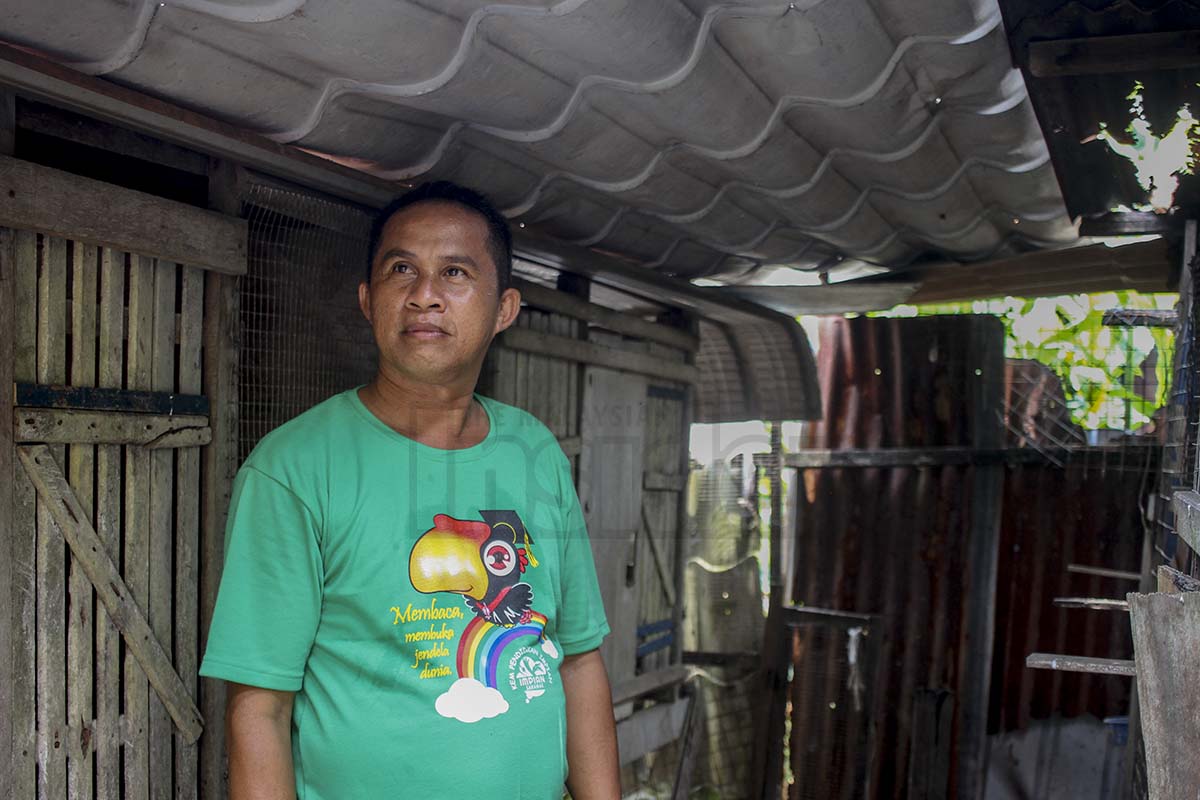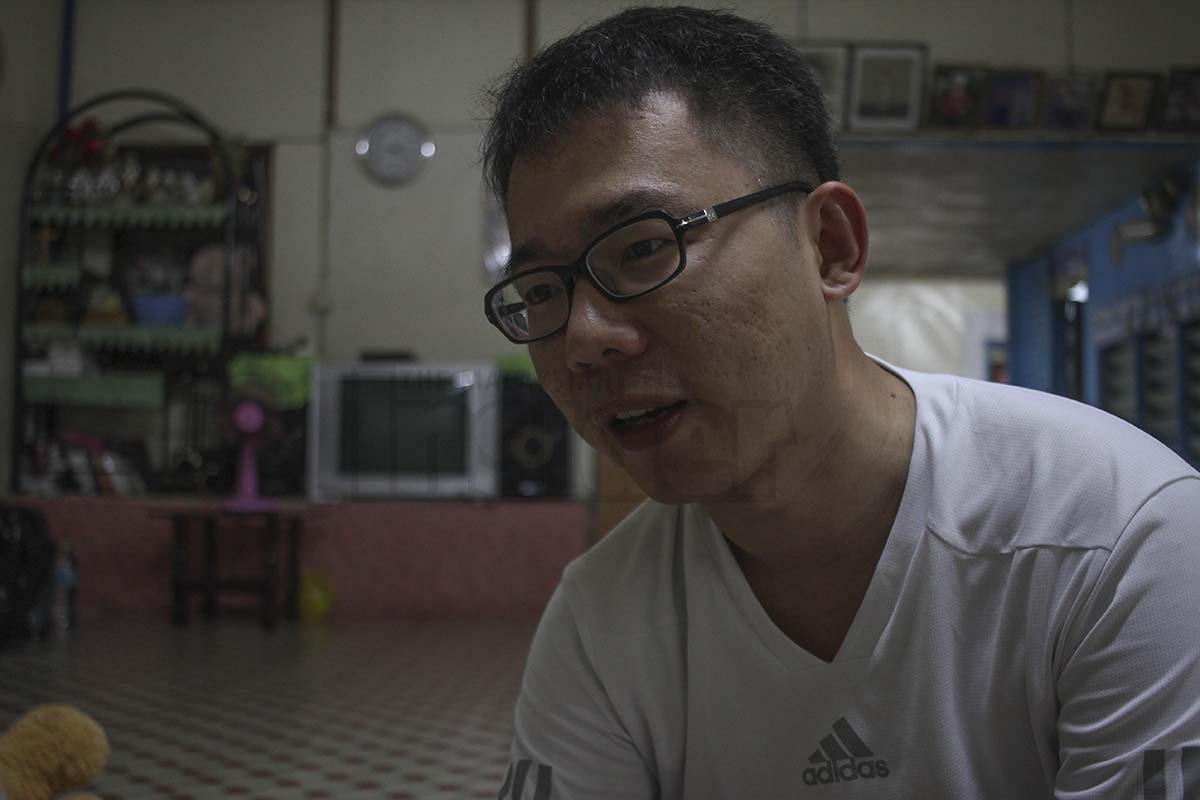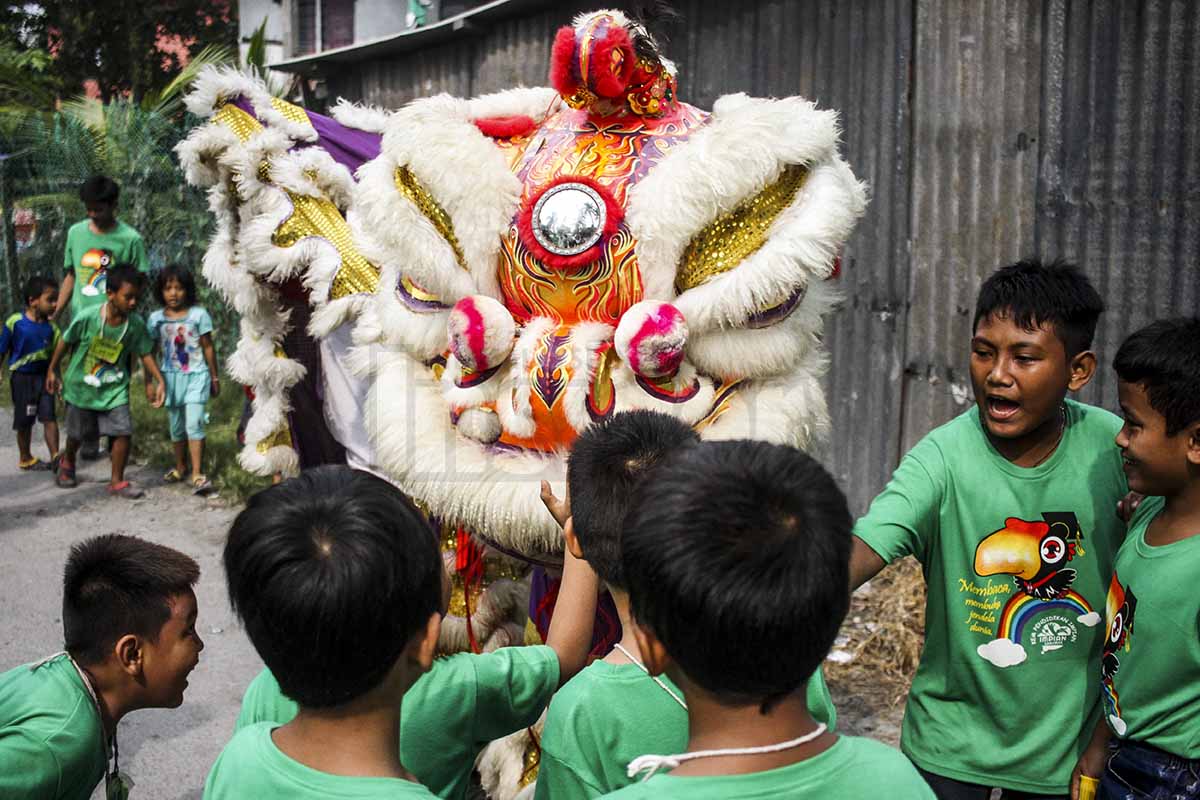BY SHERIDAN MAHAVERA
The Malaysian Insider
Published: 7 October 2015 9:00 AM
Children entertained by a lion dance during an educamp organised by Impian Sarawak in Kampung Pasir, Miri, on September 23. The project is part of DAP’s community service initiative in the Borneo states. – The Malaysian Insider pic by Seth Akmal, October 7, 2015.
Ros Matius Mian has never seen her four children so impatient to go to school, with the youngest waking up even before the break of dawn to get ready for classes.
But that was the experience of many parents in the squatter colony of Kampung Pasir, 30 minutes from Miri. For about a week, their bleak surroundings were transformed into a riot of screaming kids and colourful pendants because of Impian Sarawak’s education camp.
The education camp, where volunteers give poor primary school kids a fun spin on science, maths and English lessons, is one of the latest services Impian Sarawak is offering the poor and marginalised in the Bornean state.
This follows the success of the DAP’s two-year-old community service initiative that has built roads and water systems for remote villages in Sarawak and Sabah.
Besides education camps, it has also begun holding medical camps where volunteer doctors, nurses and dentists treat basic ailments, pull out rotten teeth and help patients deal with long-term problems, such as heart disease and diabetes.
“The education and medical camps were started to widen our services to rural and suburban areas which already have infrastructure but whose other needs are still not met,” said Kidurong assemblyman Chiew Ching Sing.
Communal effort
Kampung Pasir is a case in point. Ties between neighbours in the village’s ramshackle homes are weak because the colony exists in a grey area. The city council provides some services but it is not a formal neighbourhood, said Piasau assemblyman Alan Ling.

Bidin Jamilan sent both his primary schoolchildren and 14-year-old daughter to an education camp organised by Impian Sarawak. – The Malaysian Insider pic by Seth Akmal, October 7, 2015.
The residents cannot afford tuition classes for their children and there is almost no communal space for the residents to get together.
This is why the education camp was as well received by parents as well as their children, said Bidin Jamilan, who sent both his primary schoolchildren and 14-year-old daughter to the programme.
“This brought us together because there are very few programmes that have been done here,” said Bidin, a lorry driver.
Parents gathered to cook meals for the children and the Impian volunteers who were the teachers. Volunteers stayed in the homes of villagers and teenagers, such as Bidin’s daughter, became teaching assistants who helped look after the smaller children.
The pupils themselves, under the guidance of their volunteer teachers, helped stack chairs, organise stationery and put away lesson materials for the camp’s small classroom which was a house donated by a resident.
Like Impian’s infrastructure projects, the camps have a strong emphasis on communal participation where everyone pitched in, so as to give every resident a sense of ownership in the project, said Ling.
“Every parent volunteered, even the adults who did not have kids came to help cook,” said Ros, 42.
The education camp in Kampung Pasir is the seventh for Impian Sarawak.
A longhouse resident from Sengok, Kuala Binyo, getting a check-up as part of Impian Sarawak’s medical camp on October 1. – The Malaysian Insider pic by Seth Akmal, October 7, 2015.
Suffering in silence
Like the education camps, Impian’s medical services are basic but are welcome in communities where transport to the nearest government hospital is still difficult to obtain.
One medical camp The Malaysian Insider visited recently toured three longhouses along Sungai Kemena some three hours by boat from Bintulu.
Volunteer doctors, dentists and assistants would usually spend the night at the longhouse together with the families they would treat the next day.
The medical camps usually visit three locations in one tour of duty, said Chew.

Naritapula Liban had charted a boat with other members of her longhouse, Rumah Inai, to visit the doctors and dentists of the camp set up at Kampung Sengok.
Although everyone visited the doctors, the dentists were the most sought after by the villagers as government ones were hard to come by in the interior.
“Government dentists only come once a year to the longhouses. It’s expensive to go all the way to Bintulu for treatment unless you are in real pain,” said the 52-year-old, adding that most times villagers try to ignore their toothache.
“This camp is good because they bring the services to us. I have never seen government mobile clinics coming to the longhouse.”
In the medical camp’s three-day tour, it treated 241 patients from three longhouses and extracted 221 teeth.
One of camp’s dentists, Dr Tiew Soon Tat, said poor dental health was common in remote communities with little access to dentists.
Although there were rural clinics in the interior, Chew said they were not well staffed and equipped. Good dentists were also rare in these facilities.
One of the camp’s doctors, Dr Ko Chung Sen said many of the rural folk he treated suffered in silence from conditions, such as high blood pressure and muscular pain because they could not get regular access to quality health care because of transport difficulties.
“So even if the government builds clinics in Sarawak’s interior, residents can’t make use of them because they don’t have roads to go to them.” – October 7, 2015.


